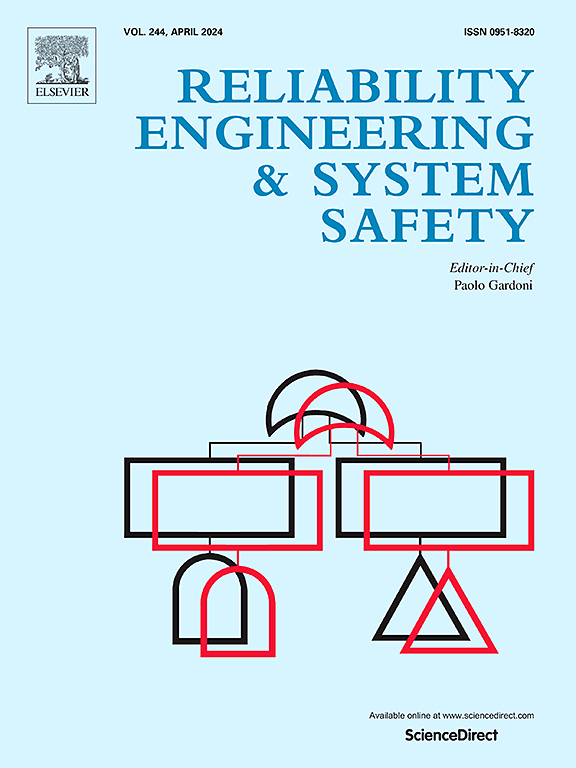Dynamic predictive maintenance strategy for the multi-state system based on remaining life prediction
IF 11
1区 工程技术
Q1 ENGINEERING, INDUSTRIAL
引用次数: 0
Abstract
In research on health management of complex systems, most predictive maintenance approaches focus on a single aspect of it, often lacking a holistic approach. To address this gap, we propose a comprehensive dynamic predictive maintenance strategy based on the remaining useful life (RUL) prediction method, designed to enable real-time system monitoring, dynamic forecasting, and optimized maintenance decision-making. Firstly, an integrated 1D-CNN-Informer prediction framework is introduced, which combines one-dimensional convolutional neural networks (1D-CNN) with the Informer model to predict RUL effectively. Secondly, based on the RUL predicted by the hybrid model, a dynamic predictive maintenance strategy for the system is developed. This strategy encompasses several key components, including spare parts ordering, inventory management, and maintenance decision-making, thereby forming a closed-loop maintenance decision system. For spare parts ordering, we further proposed a multi-state spare parts ordering strategy to optimize procurement decisions. This strategy dynamically determines the ordering status by evaluating the expected costs of inventory and out-of-stock, ensuring that overall costs are minimized while maintaining system reliability. Ultimately, the results of the experiment based on the turbofan engine dataset reveal that, compared to existing predictive maintenance strategies, the dynamic predictive maintenance framework we propose not only achieves more precise predictions but also demonstrates significant advantages in optimizing maintenance decisions.
基于剩余寿命预测的多状态系统动态预测维修策略
在复杂系统健康管理的研究中,大多数预测性维护方法都侧重于系统健康管理的单个方面,往往缺乏整体方法。为了解决这一差距,我们提出了一种基于剩余使用寿命(RUL)预测方法的综合动态预测维护策略,旨在实现实时系统监控、动态预测和优化维护决策。首先,介绍了一维卷积神经网络(1D-CNN)与Informer模型相结合的一维卷积神经网络(1D-CNN)集成预测框架,有效预测RUL;其次,基于混合模型预测的RUL,提出了系统的动态预测维护策略;该策略包含了备件订购、库存管理和维修决策等几个关键部分,从而形成了一个闭环维修决策系统。针对备件订购问题,进一步提出了一种多状态备件订购策略来优化采购决策。该策略通过评估库存和缺货的预期成本来动态确定订购状态,确保在保持系统可靠性的同时最小化总成本。最后,基于涡扇发动机数据集的实验结果表明,与现有的预测维护策略相比,我们提出的动态预测维护框架不仅实现了更精确的预测,而且在优化维护决策方面具有显著优势。
本文章由计算机程序翻译,如有差异,请以英文原文为准。
求助全文
约1分钟内获得全文
求助全文
来源期刊

Reliability Engineering & System Safety
管理科学-工程:工业
CiteScore
15.20
自引率
39.50%
发文量
621
审稿时长
67 days
期刊介绍:
Elsevier publishes Reliability Engineering & System Safety in association with the European Safety and Reliability Association and the Safety Engineering and Risk Analysis Division. The international journal is devoted to developing and applying methods to enhance the safety and reliability of complex technological systems, like nuclear power plants, chemical plants, hazardous waste facilities, space systems, offshore and maritime systems, transportation systems, constructed infrastructure, and manufacturing plants. The journal normally publishes only articles that involve the analysis of substantive problems related to the reliability of complex systems or present techniques and/or theoretical results that have a discernable relationship to the solution of such problems. An important aim is to balance academic material and practical applications.
 求助内容:
求助内容: 应助结果提醒方式:
应助结果提醒方式:


